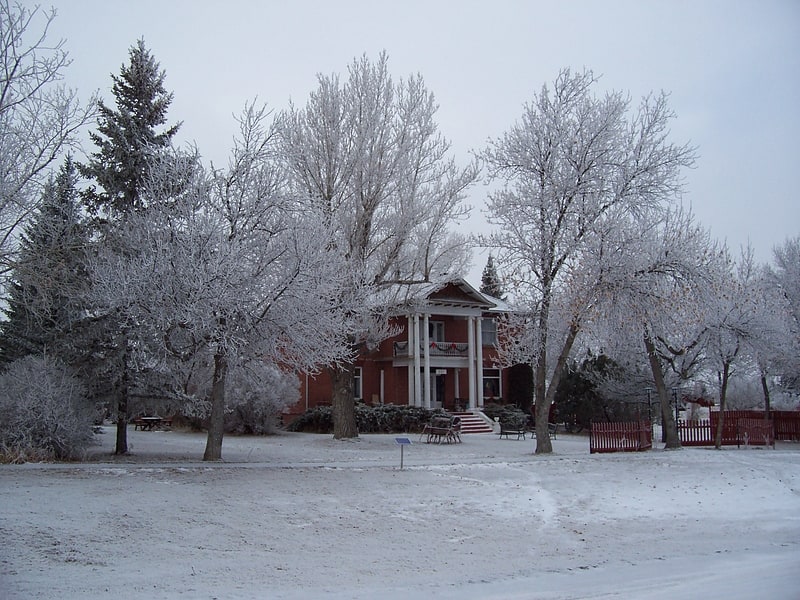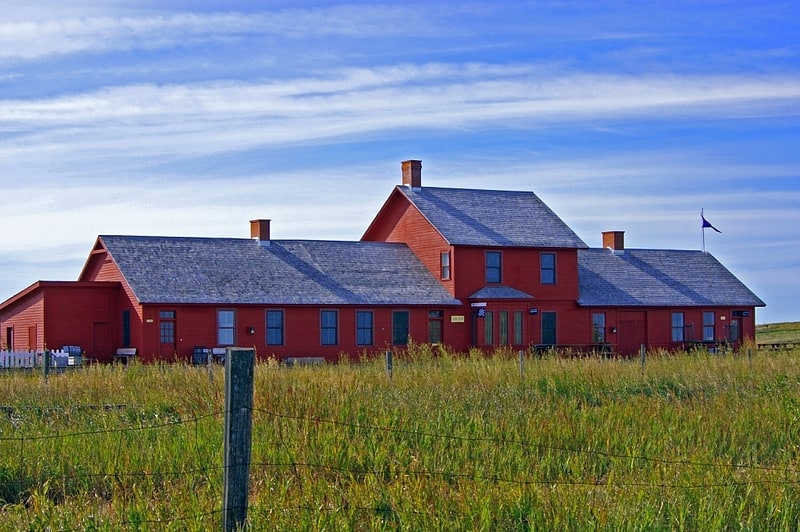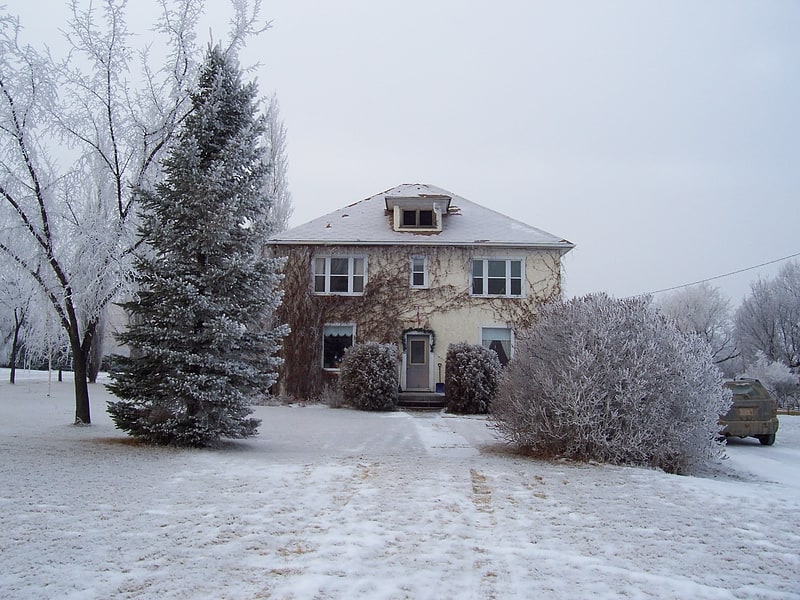Discover 5 hidden attractions, cool sights, and unusual things to do in Stirling (Canada). Don't miss out on these must-see attractions: Michelsen Farmstead, William T. Ogden House, and Galt Historic Railway Park. Also, be sure to include Neils Hogenson House in your itinerary.
Below, you can find the list of the most amazing places you should visit in Stirling (Alberta).
Table of Contents
Michelsen Farmstead

The Andreas Michelsen Farmstead, was originally built as a two-room house in 1902 by Andreas himself. In 1912 an addition was added to the home, making seven rooms in total, and little has changed since. The homestead consists of a 1+1⁄2-story Victorian style farmhouse with a wraparound porch, and various outbuildings including a barn, granary, calving shed, coal shed, machine shed, storage cellar, corrals and pens, and an outhouse. Landscape elements on the property include a dugout, cistern and filter, and garden. The farmstead is located at the corner of 2nd Avenue & 6th Street, on the west half of four blocks in the northwest corner of the National Historic Site of Stirling, Alberta.
The home remained in the Michelsen family until 1995 when the village, in partnership with the Stirling Historical Society, bought the homestead to turn into an interpretative center. In 2001 the homestead was registered as a Provincial Historic Resource and added to the Alberta Register of Historic Places. The Stirling Historical Society has since restored the property back to its original 19th-century style, and the farmstead is now a museum, depicting life as it was from 1900-1930s. Each summer the Historical Society holds day-camps for children and an old fashioned harvest dance which is held on the grounds of the Michelsen Farmstead every October.[1]
William T. Ogden House

Mansion in Stirling, Alberta. William T. Ogden House is a historic Neo-Classical Georgian style brick mansion located on 3 acres in Stirling, Alberta, Canada. Construction of the house began in 1910 and was finished in 1919 by William T. Ogden. The house has been a rooming house, pool hall and a dance studio, and in 1934 it became a temporary school for grades 1 through 4 due after the local school was affected by fire. This home is actually mentioned in village records as thought to be haunted as far back as the 1950s. Every Halloween, the owners conduct Stirling Haunted Mansion tours, making it the largest haunted house in Southern Alberta. The Santa Claus Mansion event is held there each December in conjunction with a Christmas lights tour. A 16-inch gauge mini railroad, the Lost Frontier Mini-Railway, winds its way around the estate.[2]
Galt Historic Railway Park

Museum in Stirling, Alberta. The Galt Historic Railway Park, collects, preserves, restores, exhibits and interprets artifacts which represent the history and social impact of the "steam" era in southern Alberta and the coal era, with emphasis on Galt Railway and the 1890 International Train Station Depot North West Territories from Coutts/Sweetgrass.
The museum is affiliated with: Canadian Museums Association, Canadian Heritage Information Network, and Virtual Museum of Canada Canadian Council for Rail Heritage, Canadian Rail Museum Association, Rocky Mountain Rail Society, West Coast Rail Association.[3]
Neils Hogenson House

Building in Stirling, Alberta. The Neils Hogenson home is an original catalogue order house purchased through the T. Eaton’s Co. Catalogue and built by Mr. Neils Hogensen. Shipped from Winnipeg by train, the home came to Stirling in crates with instruction, including shingles, lumber, doors, moldings, windows, paint, nails, hardware and building paper, all this for the cost of about $1,577.00. The home was paid for at the train station and hauled to the site of construction. Today the Neils Hogensen House remains on its original foundation and has become a local landmark, retaining many of the original features from the time it was constructed in 1917.
From the early 1900s to the 1930s, Eaton's sold entire houses from their catalogues to help with the population boom throughout Western Canada. The materials were shipped by rail to the nearest community, paid for at the station, and then hauled to the site for construction. Pricing for a home usually cost around $1,577.00 to $2,049.00 from 1917-1918. The total price depended on the extras to be added in. For $146.00 more you could add a "Hot Air Heating Plant" and for $180.00, a complete "Plumbing Outfit". The basement concrete and interior finishing were extra. This made building a home a quick and easier job for the settlers living throughout the prairies, where wood was scarce and supplies were short.[4]
Stirling Agricultural Village

National park in Stirling, Canada. Stirling Agricultural Village was designated as a National Historic Site of Canada on June 22, 1989. The site was designated as a national historical site of Canada because it is the best surviving example of a Mormon agricultural village. The Michelsen Farmstead was the focus of the community, and is now a totally restored museum, listed as a Provincial Historic Site in 2001. The Galt Historic Railway Park is another popular museum located in this historic site.[5]